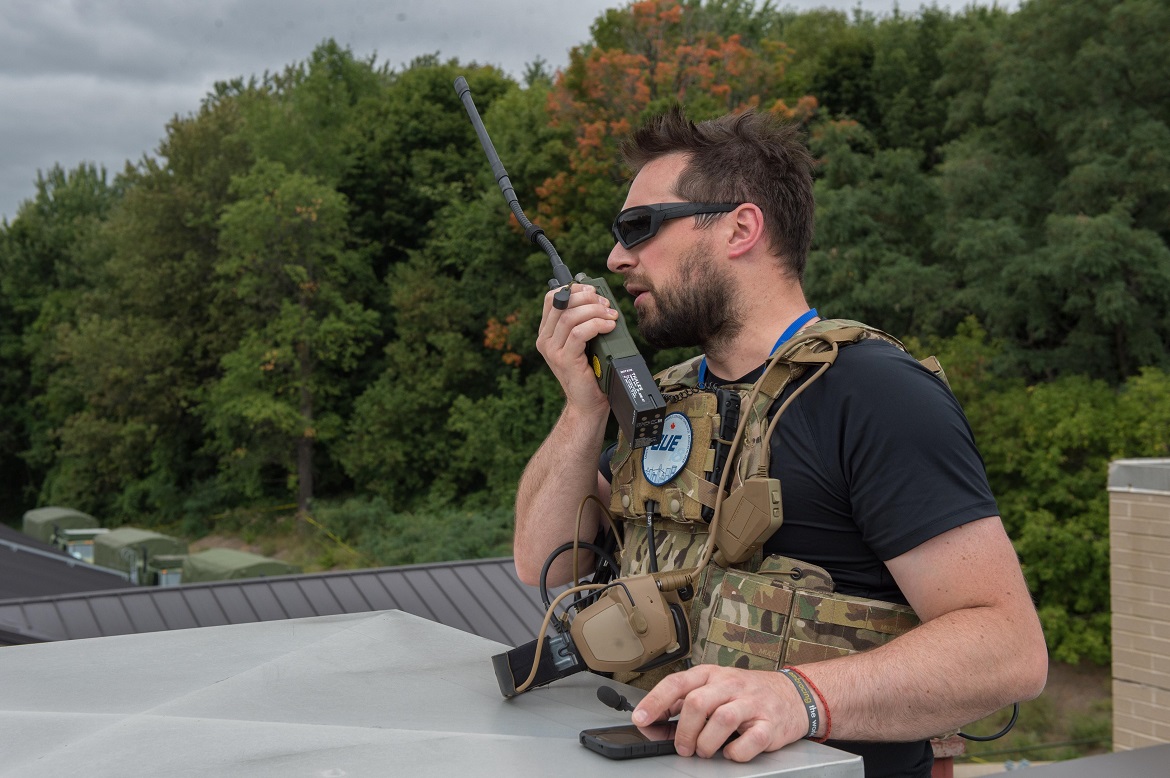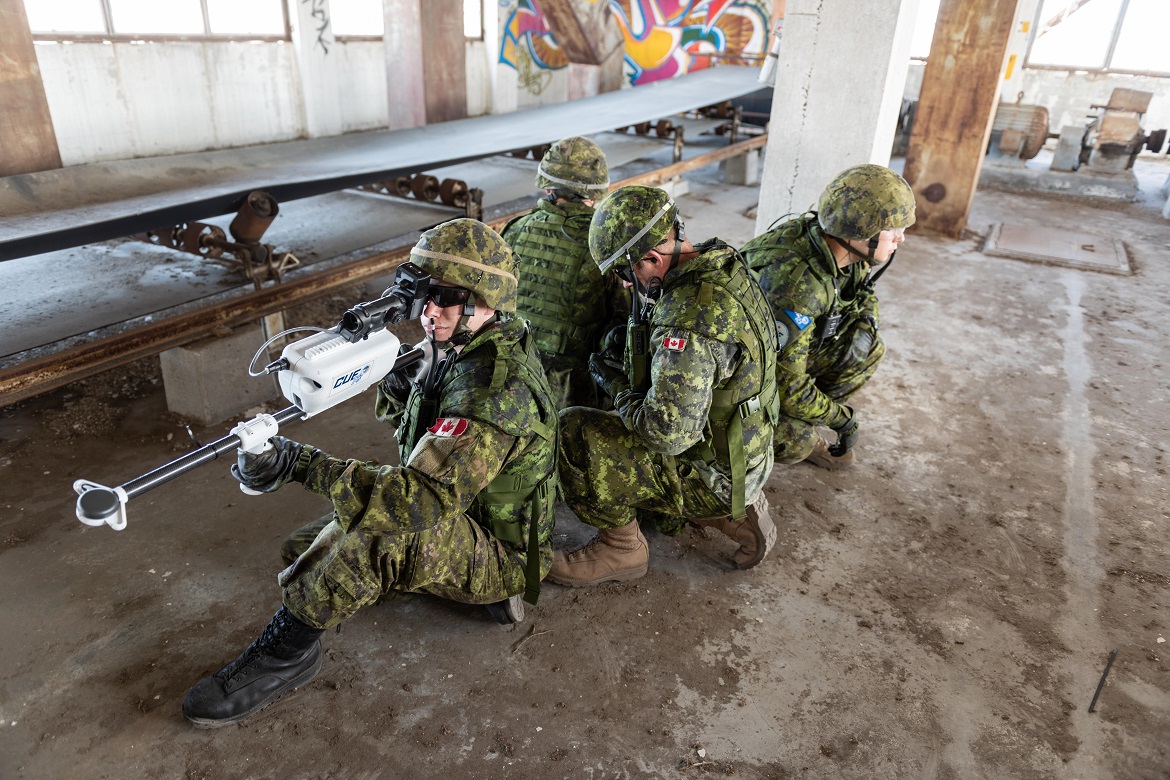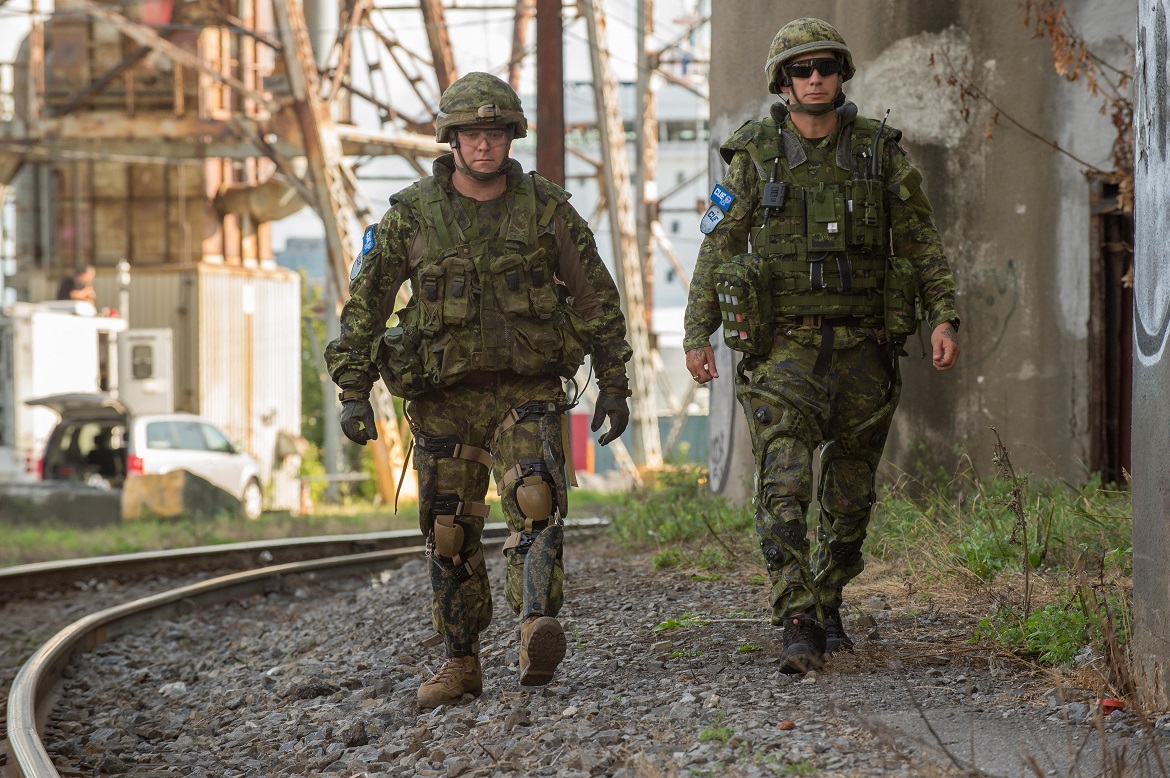Contested Urban Environment 2018
From Defence Research and Development Canada
December 5, 2018
Defence science and technology advances result from collaboration between scientists and military. Innovations are born in the labs and then tested in relevant and realistic environments before being returned to the labs for further enhancements and, eventually, adopted by the military.
One of the best examples of this collaboration between defence scientists and the military is the Contested Urban Environment (CUE) experimentation campaign lead by Canada for the Technical Cooperation Program of the Five Eyes. It aims to explore new and emerging technologies adapted to the urban environment, to increase interoperability between Allies and to minimize risks to civilians and the military. Ultimately the objective is to help better understand the urban environment itself, as well as the risks and opportunities associated to military urban operations.
CUE18, the second of a series of four large experiments across the participating countries, took place in Montreal, between the 10th and the 21st of September and it was hosted by Defence Research and Development Canada. The experiment included more than 150 defence scientists from the five participating countries and 80 Canadian soldiers from B Company, 3rd Battalion of the Royal 22nd Regiment.
Montreal was chosen because of the density of its population living in the urban core area, the variety of external surfaces types, its subterranean components and the complex interconnectedness of all urban elements. The city presents a good example of the large, modern, dense, and diverse urban environment required for the experiment.
The activities were focused on three locations: de la Montagne street because it provided a wide variety of land uses, building heights and densities along a single transect cutting across the Central Building District, the scenic lookout of Mont Royal’s Kondiaronk Belvedere allowing scientists and operators to test long range biological, chemical and other electro-optical detection technologies, and the silo 5 area at the Old Port because it proved to be excellent industrial area for experiments on geospatial intelligence gathering, ground manoeuvers, aerial and reconnaissance and surveillance technology assessment.
More than 50 technologies were tested. Among the Canadian innovations we should mention the Rapid City Planner Weapon Effects modelling system allowing to plan safer routes for the soldier or help protect vulnerable perimeters, the ISS Tactical Vest literally transforming the deployed soldiers in a distributed communications and sensor network, an exoskeleton system enhancing the soldier’s physical performance, the ultra-light weight unattended ground sensor CUPSS allowing the soldiers to easily get perimeter surveillance over large and complexe areas and the CFSAS Laser Range Finder, a force multiplier allowing the soldier to cue other sensing systems dispersed in and above large urban areas.
The system interoperability tested among Allies was excellent. Most of the ground, soldier-borne or airborne ISR technologies deployed by Australia, Canada, the UK and the US in Montreal have been made promptly interoperable (tipping, cross-cueing, contact hand-off) thanks to the US Open Standard for Unattended Sensors (OSUS).
An example of the level of coalition interoperability attained is provided by our Automated Reasoning WISDOM system initially developed to tackle Maritime Domain awareness tasks, adapted swiftly to ingest and process data from the Canadian ISS tactical vests worn by the deployed soldiers, contacts from the UK SAPIENT unattended ground sensors, as well as ground track data acquired by airborne Canadian sensors, but relayed to and processed by an Australian track processor, all of this information shared using the US OSUS protocol and then disseminated as tips and alerts to all in the CUE18 Ops Center and Company HQ, but most important, when relevant, down to the soldiers operating downtown.
Scientists and operators worked alongside to gain a better understanding of the urban environment and improve their communication ability. This shows that in an increasingly complex and interconnected world, experiments such as CUE are crucial to protect military and civilian lives.
Quotation
“CUE18 is one of the most important, or the most important, experiment organized by DRDC in terms of number of technologies and participants. This experiment is very ambitious and the most imposing experiment in dense urban environment among the five countries. The CUE series tries to solves a big challenge and helps us better understand complex urban environments.


